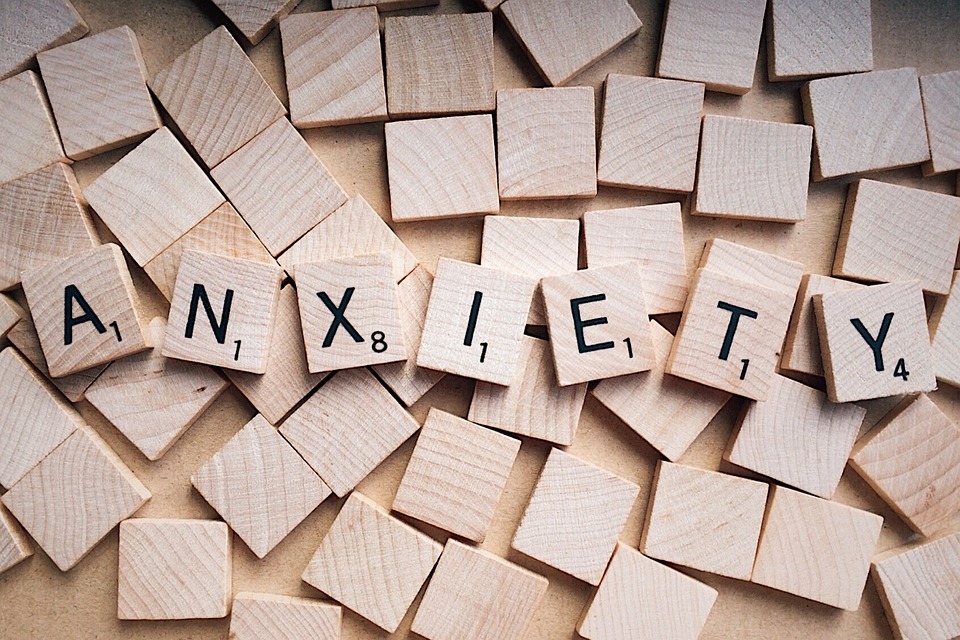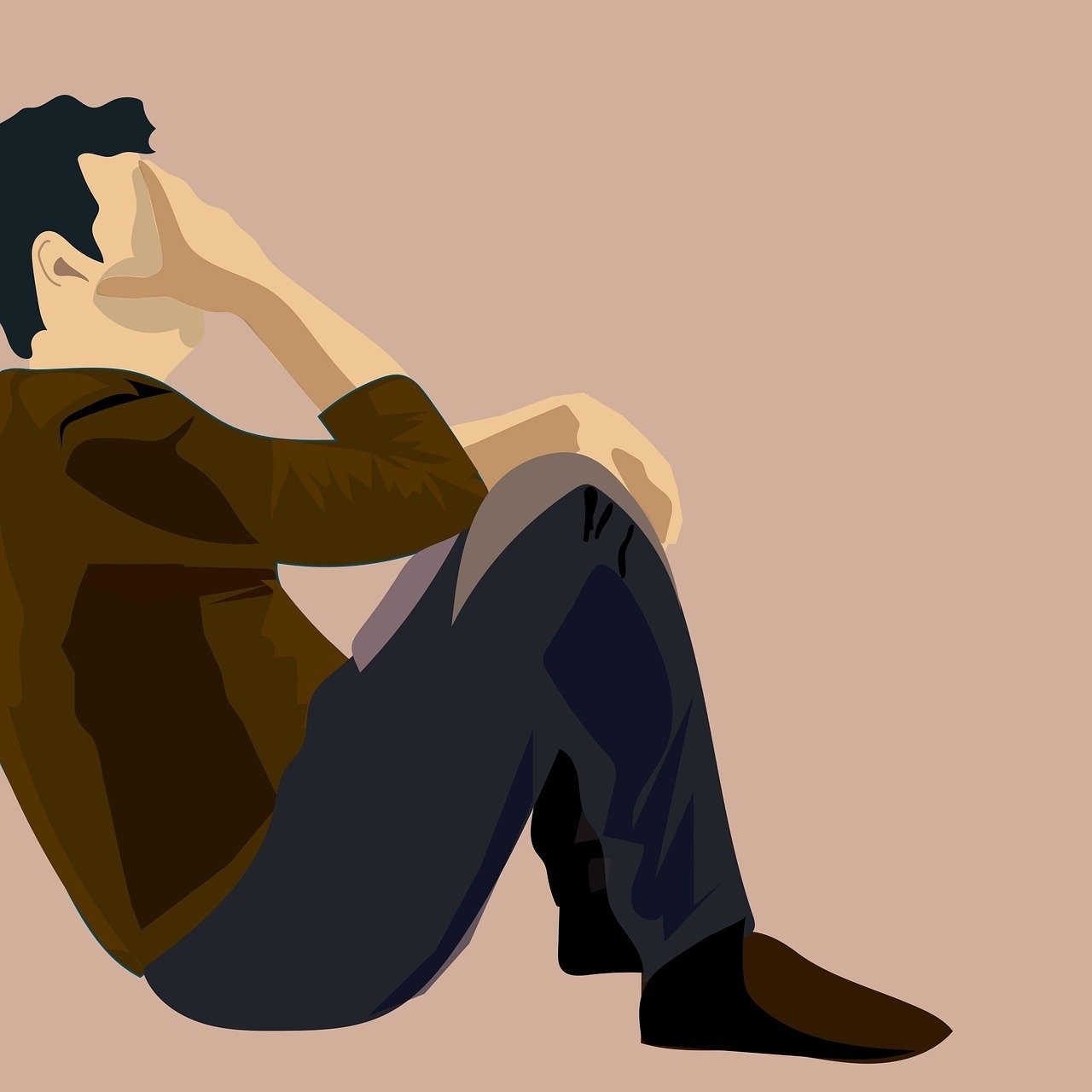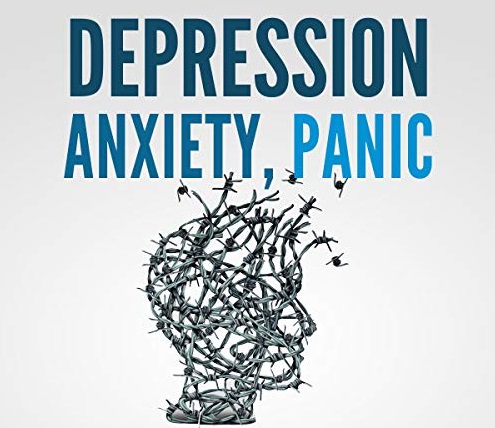
Strengthening Resilience: Several effective strategies to protect your mental health from the many downsides of anxiety disorder
Anxiety is a natural reaction to stress, but when it becomes persistent or overwhelming, it can take a toll on both mental and physical health. Strengthening resilience is key to managing anxiety and fostering a healthy, balanced mind. Resilience doesn’t mean avoiding stress—it’s about developing the ability to adapt and bounce back from life’s challenges.
This article explores several effective strategies to build resilience and protect mental well-being from the effects of anxiety disorder. Keep in mind that not every approach will work for everyone, but by gaining insight and understanding, you may discover techniques that suit you best. Let’s explore them one by one.
1. Develop a Growth Mindset
A growth mindset is the belief that abilities and intelligence can be developed through dedication and hard work. Viewing challenges as opportunities to grow rather than threats can shift your perspective and reduce anxiety. Embrace setbacks as learning experiences, and remind yourself that difficulties are temporary and surmountable.
2. Practice Mindfulness and Meditation
Mindfulness involves focusing on the present moment without judgment. Regular mindfulness practice can help reduce anxiety by shifting attention away from distressing thoughts and fostering a sense of calm. Meditation, deep breathing, and body scanning techniques can further support emotional regulation and stress management.
3. Prioritize Self-Care
Taking care of your body and mind is crucial in strengthening resilience. Ensure you get adequate sleep, maintain a balanced diet, and engage in regular physical activity. Exercise, in particular, has been shown to reduce anxiety by releasing endorphins and improving mood. Additionally, engaging in activities that bring joy and relaxation, such as hobbies or spending time in nature, can contribute to overall mental well-being.
4. Build a Strong Support System
Having supportive relationships can significantly buffer the effects of anxiety. Surround yourself with positive and understanding individuals who encourage resilience. Whether through family, friends, support groups, or therapy, meaningful connections provide comfort and guidance during stressful times.
5. Cultivate Emotional Regulation Skills
Managing emotions effectively can prevent anxiety from escalating. Techniques such as journaling, cognitive reframing, and engaging in creative outlets like art or music can help process emotions in a healthy way. Identifying triggers and developing coping mechanisms tailored to your needs can also enhance emotional resilience.
6. Establish Healthy Boundaries
Setting boundaries is essential for maintaining mental health and preventing burnout. Learn to say no to demands that exceed your emotional or physical capacity. Prioritize activities that align with your well-being, and avoid situations or individuals that contribute to unnecessary stress.
7. Develop Problem-Solving Skills
Resilience involves facing problems head-on rather than avoiding them. Strengthen your problem-solving skills by breaking challenges into manageable steps. Identify possible solutions, weigh their pros and cons, and take action. Feeling in control of situations can reduce anxiety and enhance confidence in handling future stressors.
8. Seek Professional Help When Needed
There is no shame in seeking professional support when anxiety becomes overwhelming. Therapy, counseling, or psychiatric intervention can provide tailored strategies and coping mechanisms. Cognitive-behavioral therapy (CBT), in particular, has proven effective in reducing anxiety symptoms and improving resilience.
Building resilience against anxiety disorder requires consistent effort and self-awareness. By fostering a growth mindset, practicing mindfulness, prioritizing self-care, and seeking support, you can strengthen your mental health and navigate life’s challenges with confidence. Remember, resilience is not about eliminating stress but about developing the capacity to adapt, recover, and thrive


Dealing with Anxiety Triggers: Managing Relationships with Family Members who trigger our own anxiety: Some suggested steps to take and how to communicate when you feel the need to distance yourself or avoid interaction with them.
Living with anxiety can be challenging on its own, but navigating relationships with family members who trigger that anxiety adds an extra layer of complexity. Unlike casual acquaintances or coworkers, family members are often deeply integrated into your life, making avoidance more difficult and potentially damaging to family bonds. However, there are ways to address these relationships and manage your anxiety while maintaining boundaries and open communication.
This article explores the emotional challenges of interacting with family members who exacerbate anxiety, provides steps to cope, and offers practical advice on how to communicate your needs effectively. Understanding these techniques can help you maintain your mental well-being while minimizing tension within the family.
Understanding How Family Can Trigger Anxiety
Before diving into solutions, it’s essential to identify why family members may provoke feelings of anxiety. These reasons vary greatly depending on personal history, family dynamics, and individual triggers. Some common causes include:
- Unresolved Past Conflicts: Recurring conflicts from the past can leave emotional scars that resurface during interactions.
- Unrealistic Expectations: Families often place expectations on members to behave, achieve, or live up to certain standards, leading to pressure and anxiety.
- Lack of Boundaries: Overly invasive or controlling family members can make one feel suffocated, stripping away a sense of autonomy.
- Emotional Manipulation: Family members who use guilt or emotional manipulation can induce stress and anxiety, creating a toxic atmosphere.
- Family Roles and Dynamics: Traditional family roles or a history of dysfunction may perpetuate toxic dynamics that cause anxiety.
- Frequent Criticism or Judgment: Family members who frequently criticize or judge you can trigger feelings of inadequacy, leading to social anxiety and withdrawal.
Identifying the specific triggers within your family dynamic is crucial. Once you’re aware of these, you can begin addressing them with clear boundaries and communication strategies.
Steps to Take When Dealing with Family-Related Anxiety
When faced with family-induced anxiety, it’s important to approach the situation with care. Rather than impulsively reacting or permanently severing ties, consider these thoughtful steps to manage your mental health and maintain your relationship with your family members:
- Recognize Your Triggers Start by identifying which situations or behaviors from family members trigger your anxiety. Is it certain conversations, comments about your life, or particular family gatherings? Understanding what sets you off can help you take proactive measures to address the issue and plan how to respond before encountering similar situations again.
- Set Healthy Boundaries Once you’ve pinpointed the sources of anxiety, the next step is to set boundaries. Boundaries are crucial for maintaining emotional health, especially with family. Whether it’s limiting the time you spend with them or making certain topics off-limits in conversations, healthy boundaries prevent you from feeling overwhelmed.
For example, if family members often criticize your life choices, politely let them know you won’t entertain discussions on those subjects. You can say, “I appreciate your concern, but I would prefer not to talk about my job or relationships at this time.”
- Limit Exposure to Toxic Situations While it might be impossible to cut off contact with family members completely, reducing your exposure to toxic situations can help. Skip gatherings that make you anxious, or spend less time with people who trigger your anxiety. Focus on protecting your mental health, even if it means saying no to certain events.
- Practice Self-Care Engaging in self-care is crucial to managing anxiety, particularly when dealing with family triggers. This could involve physical activities like yoga or exercise, journaling your emotions, meditating, or simply giving yourself a break from toxic conversations. Self-care isn’t selfish—it’s a necessary part of maintaining your well-being.
- Seek Professional Support If family dynamics are too overwhelming, seeking professional guidance through therapy can be immensely helpful. Therapists can help you process emotions, develop coping strategies, and teach you how to handle difficult family relationships without sacrificing your mental health. Cognitive Behavioral Therapy (CBT) is a particularly effective treatment for anxiety triggered by familial interactions.
Effective Communication Strategies for Setting Boundaries
Communicating your boundaries with family members can be challenging, especially when they are not used to you asserting your needs. Clear, respectful communication is key to maintaining your mental health and preserving family relationships.
- Be Direct and Clear When discussing your boundaries, be as clear as possible. Avoid vague language that could be misinterpreted. For example, instead of saying, “I don’t want to talk about work,” you could say, “I’m currently stressed about work, and I would like to avoid discussing it during family gatherings.”
- Use “I” Statements Frame your concerns using “I” statements, which focus on your feelings rather than placing blame. For example, “I feel anxious when conversations get too heated, and I’d like to change the subject when that happens,” instead of, “You always make me anxious when we argue.” This approach prevents defensiveness and keeps the conversation solution-focused.
- Remain Calm and Respectful Even if the conversation feels tense, try to stay calm and respectful. Losing your temper or reacting with hostility may escalate the situation and reinforce negative family dynamics. Approach the discussion with the goal of resolution, not confrontation.
- Be Consistent with Your Boundaries Once you’ve set a boundary, it’s important to enforce it consistently. Family members may test your limits, but standing firm will show them that you’re serious about protecting your well-being. For example, if you’ve asked them not to bring up a certain topic and they do, gently remind them, “I’ve asked that we don’t discuss this subject.”
- Know When to Walk Away If family members continue to push your boundaries or create anxiety despite your best efforts, it may be necessary to distance yourself temporarily or walk away from the conversation. Protecting your mental health should be your top priority, even if it means stepping away from difficult family interactions.
When Avoiding Interaction is Necessary
There are instances when avoiding or limiting contact with certain family members is necessary to protect your mental health. Some relationships are too toxic or damaging to manage on a day-to-day basis, even with boundaries in place. Here are some situations where avoidance might be a viable option:
- Emotional or Physical Abuse If a family member is emotionally manipulative, verbally abusive, or physically threatening, it’s essential to distance yourself from them. No relationship, family or otherwise, is worth sacrificing your safety or mental well-being.
- Persistent Boundary Violations If you’ve set clear boundaries and they are consistently ignored or violated, it may be time to minimize or avoid contact. Repeated boundary violations demonstrate a lack of respect for your needs and mental health.
- Unwillingness to Compromise Family dynamics are healthiest when there is mutual respect and a willingness to compromise. If a family member refuses to meet you halfway and continues to act in ways that trigger anxiety, limiting interactions may be the best solution for your well-being.
- Toxic Environments If the family environment is consistently toxic—whether due to constant arguing, manipulation, or negativity—consider reducing your exposure to it. Your mental health should come before maintaining obligatory ties to unhealthy family dynamics.
Coping Mechanisms for Anxiety During Family Gatherings
Sometimes, avoiding family gatherings entirely may not be possible or desired. In those cases, it’s important to have coping mechanisms in place to manage your anxiety during interactions with family members who trigger you.
- Have an Exit Plan Before attending a family gathering, establish an exit plan in case things become too overwhelming. This could involve leaving early or taking short breaks to step outside, calm down, and refocus.
- Breathe and Ground Yourself Practice deep breathing or grounding techniques when anxiety starts to rise. Breathing exercises can help slow your heart rate and bring you back to the present moment, keeping anxiety at bay during triggering interactions.
- Focus on Supportive Family Members At family events, try to gravitate towards those who provide comfort and support rather than those who trigger anxiety. Spend your time with people who uplift and encourage you rather than those who make you feel drained.
- Limit Alcohol and Caffeine Both alcohol and caffeine can exacerbate anxiety, making you more susceptible to stress. Limiting your intake of these substances can help keep your anxiety levels manageable during family gatherings.
- Prepare Responses Ahead of Time If you know certain topics or comments will trigger anxiety, plan responses ahead of time. Having pre-prepared statements can help you navigate difficult conversations more smoothly and feel more in control.
Final few words: Managing Family Dynamics and Prioritizing Mental Health
Dealing with anxiety, especially when triggered by close family members, can be a painful and exhausting experience. However, by taking proactive steps—recognizing triggers, setting boundaries, communicating clearly, and prioritizing your well-being—you can manage these relationships in a way that protects your mental health without completely severing ties.
Remember, it’s okay to step back from relationships that negatively impact you. You are not obligated to tolerate behaviors that trigger anxiety, even from family members. By focusing on self-care, boundary setting, and seeking professional support when necessary, you can maintain a healthier and more balanced approach to family dynamics while prioritizing your mental health.


Understanding the difference between chronic depression and seasonal depression: When is it a good time to schedule a session with a professional mental health provider and what are the possible symptoms differentiating both types of depression!

Depression is a multifaceted mental health issue that impacts millions globally. It appears in various forms, with chronic and seasonal depression being two distinct types. Recognizing the differences between these forms is essential for seeking proper treatment and managing symptoms effectively. This article examines the characteristics of chronic and seasonal depression, outlines their key symptoms, and advises when to consult a mental health professional.
As each person’s experience with depression is unique, it’s important to seek expert help if you find that depression is disrupting your daily life.
Chronic Depression
Characteristics
Chronic depression, also known as persistent depressive disorder (PDD) or dysthymia, is a long-term form of depression that lasts for at least two years. It is characterized by a persistent low mood that may be less severe than major depressive disorder but is more enduring. Individuals with chronic depression often experience periods of major depression interspersed with periods of less severe symptoms.
Symptoms
The symptoms of chronic depression include:
- Persistent feelings of sadness or emptiness
- Loss of interest or pleasure in activities once enjoyed
- Fatigue or low energy
- Low self-esteem
- Difficulty concentrating or making decisions
- Feelings of hopelessness
- Changes in appetite and sleep patterns
- Social withdrawal
Seasonal Depression
Characteristics
Seasonal depression, also known as seasonal affective disorder (SAD), is a type of depression that occurs at a specific time of year, usually during the fall and winter months when there is less natural sunlight. It is believed to be related to changes in light exposure, which can affect the body’s internal clock and lead to feelings of depression. SAD typically resolves with the arrival of spring and longer daylight hours.
Symptoms
The symptoms of seasonal depression include:
- Depressed mood most of the day, nearly every day
- Loss of interest in activities once enjoyed
- Low energy and fatigue
- Difficulty concentrating
- Changes in appetite, particularly craving carbohydrates
- Weight gain
- Oversleeping or difficulty waking up in the morning
- Social withdrawal
- Feelings of hopelessness or worthlessness
Differentiating Chronic Depression and Seasonal Depression
While both chronic depression and seasonal depression share common symptoms such as low mood, loss of interest in activities, and fatigue, there are key differences that can help differentiate between the two:
- Duration: Chronic depression is a long-term condition that persists for at least two years, whereas seasonal depression occurs during specific seasons, typically in the fall and winter, and resolves during the spring and summer.
- Seasonal Pattern: Seasonal depression follows a predictable pattern based on the time of year, whereas chronic depression does not have a seasonal component and can occur at any time.
- Severity Fluctuations: Individuals with chronic depression may experience fluctuating severity of symptoms, including periods of major depression. In contrast, seasonal depression symptoms are usually consistent during the affected months and improve during the rest of the year.
When to Seek Professional Help
It is essential to seek professional help when experiencing symptoms of depression, whether chronic or seasonal. Here are some indicators that it is a good time to schedule a session with a mental health provider:
- Persistent Symptoms: If you have been experiencing symptoms of depression for an extended period (two weeks or more for major depression, two years or more for chronic depression), it is crucial to seek professional help.
- Interference with Daily Life: When depression symptoms interfere with daily activities, work, school, or relationships, it is time to seek help. Difficulty concentrating, persistent fatigue, and social withdrawal are signs that professional intervention is needed.
- Thoughts of Self-Harm or Suicide: If you are experiencing thoughts of self-harm or suicide, seek immediate help from a mental health professional, crisis hotline, or emergency services.
- No Improvement with Self-Help Strategies: If self-help strategies such as exercise, healthy eating, and social support do not alleviate symptoms, it is essential to consult with a mental health provider for further evaluation and treatment.
- Severe Symptoms: If symptoms are severe, such as intense feelings of hopelessness, worthlessness, or major changes in sleep and appetite, professional help is necessary.
Treatment Options
Both chronic depression and seasonal depression can be effectively managed with appropriate treatment. Common treatment options include:
- Psychotherapy: Cognitive-behavioral therapy (CBT) and other forms of therapy can help individuals identify and change negative thought patterns and behaviors.
- Medication: Antidepressant medications can be effective in treating both chronic and seasonal depression. A mental health provider can determine the most appropriate medication based on individual needs.
- Light Therapy: For seasonal depression, light therapy (exposure to a lightbox that mimics natural sunlight) can help regulate mood and alleviate symptoms.
- Lifestyle Changes: Regular exercise, a healthy diet, and good sleep hygiene can support overall mental health and complement other treatment approaches.
It is key to understand the difference between chronic depression and seasonal depression so you can recognize symptoms and seek appropriate help. Chronic depression is a long-term condition with persistent symptoms, while seasonal depression follows a seasonal pattern, typically worsening in the fall and winter months. It is essential to seek professional help when symptoms persist, interfere with daily life, or become severe.
There is no shame in dealing with depression, but without the right treatment and support, individuals with chronic or seasonal depression can end up with destructive behaviors that can harm them or others.


How parenting trends affect our mental health? IF all family dynamics are different in nature, no magic formula can work to alleviate the stress of parenting. What other alternative solutions are available?
Parenting is a complex and ever-evolving journey, influenced by a myriad of trends and societal shifts. As families navigate these trends, the impact on mental health becomes increasingly significant. This article delves into how contemporary parenting trends affect mental health and explores alternative solutions to manage the stress and pressures of parenting in today’s world.
The Influence of Parenting Trends on Mental Health
Parenting trends, from attachment parenting to free-range parenting, shape not only how we raise our children but also how we perceive our roles as parents. Each trend carries its own set of expectations, which can profoundly impact mental health.

Attachment Parenting: This approach emphasizes close physical and emotional bonds with children, often advocating for practices like co-sleeping and extended breastfeeding. While fostering strong bonds can be beneficial, the constant physical and emotional availability required can lead to parental burnout and heightened anxiety, especially if parents feel they are not meeting these high standards.

Helicopter Parenting: This trend involves a high level of involvement in a child’s life, often characterized by over-protection and micromanagement. While the intention is to safeguard the child’s well-being, it can result in parental stress and anxiety as parents feel responsible for every aspect of their child’s experiences and outcomes.

Free-Range Parenting: Advocating for greater independence and self-sufficiency in children, this trend encourages allowing children more freedom. While this can reduce parental stress by alleviating some responsibilities, it can also lead to anxiety and judgment from others who may view this approach as neglectful or irresponsible.

Tiger Parenting: Popularized by Amy Chua’s book “Battle Hymn of the Tiger Mother,” this approach involves strict rules and high expectations, often focused on academic and extracurricular success. The pressure to constantly push children to excel can result in significant stress and anxiety for parents, as well as a strained parent-child relationship.
Family Dynamics and Mental Health
It’s essential to recognize that no single parenting trend works universally. Family dynamics are unique, and what works for one family might not work for another. Factors such as cultural background, socioeconomic status, and individual temperaments play a crucial role in shaping parenting practices and their impact on mental health.
- Cultural Background: Different cultures have varied expectations and norms around parenting, which can influence how trends are perceived and implemented. For example, collectivist cultures may emphasize community and familial involvement, whereas individualist cultures might prioritize independence and self-reliance.
- Socioeconomic Status: Families with different socioeconomic backgrounds face distinct challenges and stressors. For instance, lower-income families may experience more stress related to financial stability, which can exacerbate the pressures of adhering to certain parenting trends.
- Individual Temperaments: Both parents’ and children’s personalities and temperaments affect how parenting strategies are received and executed. A highly sensitive child might thrive under attachment parenting, while an independent child might benefit more from free-range parenting.
Alternative Solutions for Alleviating Parenting Stress
Given the diversity in family dynamics, no magic formula can alleviate the stress of parenting universally. However, there are alternative solutions that can help manage and reduce stress:
- Mindfulness and Self-Care: Practicing mindfulness and prioritizing self-care can help parents manage stress and maintain a healthy mental state. Techniques such as meditation, yoga, and deep-breathing exercises can provide a sense of calm and perspective.
- Support Networks: Building a strong support network of family, friends, and community resources can provide emotional and practical support. Parenting groups, online forums, and counseling services can offer guidance, validation, and a sense of belonging.
- Flexible Parenting Approaches: Adopting a flexible and adaptive approach to parenting can reduce stress. Instead of rigidly adhering to a single trend, parents can combine elements from various approaches to find what works best for their family.
- Communication and Co-Parenting: Open communication and effective co-parenting strategies can alleviate stress by ensuring that both parents are on the same page and share responsibilities. Regular check-ins and discussions about parenting approaches can foster a more harmonious family environment.
- Education and Resources: Educating oneself about child development and parenting strategies can empower parents to make informed decisions. Access to resources such as books, workshops, and expert consultations can provide valuable insights and tools.
- Professional Help: Seeking professional help from therapists or counselors can be beneficial in managing stress and addressing mental health issues. Professional support can provide personalized strategies and coping mechanisms tailored to individual needs.
Is there a magic formula?
Parenting trends significantly influence mental health, with different approaches presenting unique challenges and benefits. Recognizing the diversity in family dynamics is crucial, as no single approach works for everyone. By exploring alternative solutions such as mindfulness, support networks, flexible parenting, communication, education, and professional help, parents can better manage stress and maintain a healthier mental state. Ultimately, finding a balanced approach that aligns with individual family needs and values is key to fostering both parental well-being and positive child development.

The many faces of anxiety: Does the latter affect more than just the brain? Is it just mental or the physical gets affected? Let’s tackle each spectrum.

Anxiety is a complex condition that impacts more than just the brain, with both mental and physical symptoms affecting many areas of a person’s life. If not promptly and effectively treated with medication or psychotherapy, anxiety can lead to long-term consequences. Ignoring the symptoms can result in not only mental but also physical and social issues. Let’s examine how anxiety affects different dimensions of health and well-being.
Mental and Emotional Effects
- Cognitive Impairment: Anxiety can significantly affect cognitive functions such as memory, attention, and decision-making. People with anxiety often experience racing thoughts, difficulty concentrating, and intrusive worries, which can impair their ability to function effectively in daily tasks and professional responsibilities.
- Emotional Distress: Anxiety disorders often come with heightened emotional sensitivity. Individuals may feel overwhelmed, fearful, and experience mood swings. This emotional distress can lead to irritability, frustration, and a general sense of unease, making it challenging to maintain emotional stability.
Physical Effects
- Cardiovascular System: Anxiety triggers the body’s “fight or flight” response, which can lead to increased heart rate, palpitations, and elevated blood pressure. Chronic anxiety can contribute to long-term cardiovascular issues, including heart disease and hypertension.
- Respiratory System: Anxiety can cause rapid, shallow breathing or hyperventilation, leading to respiratory problems. People with anxiety may feel short of breath, even when there is no physical exertion, exacerbating feelings of panic and discomfort.
- Digestive System: The gut-brain connection is well-documented, and anxiety can significantly impact the digestive system. Symptoms such as nausea, stomach cramps, irritable bowel syndrome (IBS), and changes in appetite are common. Chronic anxiety can disrupt normal digestive processes, leading to long-term gastrointestinal issues.
- Musculoskeletal System: Anxiety often leads to muscle tension, resulting in aches, pains, and headaches. Chronic muscle tension can contribute to conditions like tension headaches, migraines, and musculoskeletal pain, further affecting physical well-being.
- Immune System: Chronic anxiety can weaken the immune system, making individuals more susceptible to infections and illnesses. The constant state of stress associated with anxiety can reduce the body’s ability to fight off pathogens effectively.
Social and Behavioral Effects
- Social Interaction: Anxiety can severely impact social interactions and relationships. Individuals may avoid social situations due to fear of judgment or embarrassment, leading to isolation and loneliness. This social withdrawal can exacerbate feelings of anxiety and depression, creating a vicious cycle.
- Behavioral Changes: Anxiety can lead to various behavioral changes, such as increased reliance on substances like alcohol or drugs as coping mechanisms. It may also result in unhealthy habits like overeating, smoking, or excessive caffeine consumption, further affecting overall health.
- Sleep Disturbances: Anxiety often disrupts sleep patterns, leading to insomnia or poor-quality sleep. Lack of restorative sleep can worsen anxiety symptoms, reduce cognitive function, and negatively impact physical health.
Addressing Anxiety Holistically
- Mental Health Support: Seeking professional help from therapists or counselors can provide valuable strategies for managing anxiety. Cognitive-behavioral therapy (CBT), mindfulness, and other therapeutic techniques can help individuals understand and manage their anxiety better.
- Physical Health Interventions: Regular exercise, a balanced diet, and adequate sleep are crucial in managing anxiety. Physical activity releases endorphins, which can help reduce anxiety symptoms, while a nutritious diet supports overall well-being.
- Social Support: Building a strong support network of friends, family, or support groups can provide emotional support and reduce feelings of isolation. Sharing experiences and coping strategies can be beneficial in managing anxiety.
- Lifestyle Changes: Incorporating relaxation techniques such as yoga, meditation, and deep-breathing exercises can help reduce stress levels. Reducing caffeine and alcohol intake, establishing a regular sleep routine, and practicing self-care can also significantly impact anxiety management.
Anxiety is a complex condition that impacts both the mind and body. Recognizing its multifaceted effects can enable individuals to seek the right interventions and adopt strategies to manage anxiety effectively, thereby enhancing overall quality of life. Don’t let anxiety dominate your life by taking over your mind and body. Numerous treatments and mental health professionals are available to provide talk therapy and coping mechanisms. Staying silent about your mental health won’t help; not speaking out can have long-term detrimental effects on your well-being. Reach out to community members for support and ask your doctor for mental health referrals. Take steps to improve your well-being.


The Science Behind Exercise Reducing Symptoms of Depression: The Connection Between Physical Activity and Mental Health
Depression, a prevalent mental health disorder, affects millions of people worldwide. It is characterized by persistent feelings of sadness, loss of interest in activities, and various physical and emotional problems. While traditional treatments such as medication and therapy are commonly prescribed, an increasing body of research highlights the significant role of exercise in alleviating symptoms of depression.
The content provided below delves into the scientific mechanisms by which physical activity promotes mental stability and reduces depressive symptoms, underscoring the importance of a healthy lifestyle for mental well-being.
The Biological Mechanisms
- Neurotransmitter Regulation
Exercise influences the levels of several key neurotransmitters in the brain, including serotonin, dopamine, and norepinephrine. These chemicals play crucial roles in mood regulation and overall mental health.
- Serotonin: Often dubbed the “feel-good” neurotransmitter, serotonin levels are typically lower in individuals with depression. Exercise increases the availability of tryptophan, a precursor to serotonin, thereby enhancing serotonin production and improving mood.
- Dopamine: Associated with the brain’s reward system, dopamine levels can be boosted through physical activity. This increase enhances feelings of pleasure and motivation, counteracting the apathy and lethargy commonly seen in depression.
- Norepinephrine: This neurotransmitter is linked to arousal and alertness. Exercise raises norepinephrine levels, helping to reduce the cognitive and physical fatigue associated with depression.
- Endorphin Release
Endorphins, often referred to as the body’s natural painkillers, are released during exercise. These peptides interact with the brain’s opiate receptors, reducing the perception of pain and triggering a positive feeling in the body, similar to that of morphine. The “runner’s high,” a euphoric sensation experienced after prolonged aerobic exercise, is a direct result of endorphin release.
- Brain-Derived Neurotrophic Factor (BDNF)
BDNF is a protein that supports the survival, development, and function of neurons. Regular physical activity increases BDNF levels, which promotes neurogenesis (the formation of new neurons) and synaptic plasticity (the ability of synapses to strengthen or weaken over time). These processes are crucial for learning, memory, and cognitive function, all of which can be impaired in depression.
- Inflammatory Markers
Depression has been linked to increased levels of pro-inflammatory cytokines, which can affect brain function. Exercise has anti-inflammatory effects, reducing the levels of these cytokines and thereby mitigating their impact on the brain. This reduction in inflammation is associated with improvements in mood and cognitive function.
Psychological and Social Benefits
- Stress Reduction
Exercise acts as a natural stress reliever. Physical activity reduces the levels of cortisol, the body’s primary stress hormone. Lower cortisol levels help mitigate the negative effects of stress on the body and mind, which can be particularly beneficial for individuals with depression.
- Improved Sleep
Regular exercise promotes better sleep quality and duration, which is often disrupted in individuals with depression. Adequate sleep is essential for emotional regulation and cognitive function, contributing to overall mental stability.
- Boost in Self-Esteem and Confidence
Achieving fitness goals and improving physical health can enhance self-esteem and confidence. These psychological benefits are particularly important for individuals with depression, who often struggle with low self-worth and feelings of helplessness.
- Social Interaction
Many forms of exercise, such as team sports or group fitness classes, provide opportunities for social interaction. Building social connections can alleviate feelings of isolation and loneliness, which are common in depression. Engaging in shared activities fosters a sense of community and belonging, further supporting mental health.
Practical Implications
- Types of Exercise
Various types of exercise can be beneficial for reducing symptoms of depression, including aerobic activities (e.g., walking, running, cycling), resistance training (e.g., weightlifting), and mind-body exercises (e.g., yoga, tai chi). The key is to find an enjoyable and sustainable form of physical activity.
- Exercise Prescription
While the optimal amount of exercise can vary, general guidelines suggest aiming for at least 150 minutes of moderate-intensity aerobic activity or 75 minutes of vigorous-intensity activity per week, combined with muscle-strengthening activities on two or more days per week. Starting with small, manageable goals and gradually increasing intensity and duration can help individuals build a consistent exercise routine.
- Integration with Traditional Treatments
Exercise should be viewed as a complementary approach rather than a replacement for traditional depression treatments. Combining physical activity with medication, psychotherapy, and other therapeutic interventions can provide a more comprehensive treatment plan, tailored to the individual’s needs.
The scientific evidence supporting the role of exercise in reducing symptoms of depression is compelling. Through a combination of biological, psychological, and social mechanisms, regular physical activity promotes mental stability and enhances overall well-being.
Adopting a healthy lifestyle that includes regular exercise not only enhances physical health but also plays a crucial role in combating depression. Encouraging people to integrate physical activity into their daily lives can lead to notable improvements in mood, cognitive function, and overall quality of life. It’s essential to recognize that the connection between mind and body has transformed our understanding of their interdependence; mental and physical health cannot be separated if one aims to live a fulfilling life. One cannot achieve optimal mental health without physical well-being and vice versa, as they are mutually reliant.
We must strive for balance in our lives, recognizing that neglecting one aspect will inevitably impact the other. To achieve remarkable outcomes, both mental and physical health must receive equal attention, regardless of individual perceptions of their importance. Taking care of both body and mind is crucial, as they are the only “vehicles” we have for our life’s journey.


The secret of marital success: Working on yourself first for a better relationship in the future. Why individual relationship counseling is key prior to considering couples counseling?

Embarking on the journey of self-improvement before entering a relationship is a pivotal step towards fostering a more enriching and successful connection in the future. The significance of prioritizing individual relationship counseling over couples counseling lies in its multifaceted impact on personal development and subsequent relationship dynamics.
To begin with, the foundation of any healthy relationship is rooted in self-awareness. Individual relationship counseling provides individuals with a dedicated space to delve into their emotions, understand their triggers, and unravel communication patterns. This self-awareness serves as the cornerstone for navigating interpersonal relationships with authenticity and emotional intelligence.
By undergoing individual counseling, individuals gain a deeper understanding of themselves and the factors that influence their behaviors. This exploration often unveils past experiences, unresolved traumas, or lingering issues that may have a bearing on future relationships. Addressing these issues independently is crucial for creating a solid and resilient foundation upon which a healthy partnership can thrive.
Furthermore, individual counseling facilitates personal growth. It offers an opportunity for individuals to enhance their emotional resilience, self-esteem, and coping mechanisms. This personal development not only contributes to an individual’s overall well-being but also positions them to contribute positively to a future relationship from a place of strength and self-assurance.
Effective communication is a linchpin in any successful relationship. Through individual counseling, individuals can refine their communication skills, learning to express themselves more authentically and assertively. This skill set becomes invaluable in navigating the complexities of a relationship, fostering understanding and constructive dialogue.
The proactive approach of individual relationship counseling is akin to planting seeds for a future flourishing relationship. It equips individuals with the tools and insights needed to navigate challenges, manage conflicts, and sustain a supportive and nurturing partnership. This emphasis on personal development sets the stage for creating a relationship that is not only resilient but also characterized by mutual growth and understanding.
In essence, working on oneself through individual relationship counseling is a pivotal investment in the success and health of future relationships. It is a journey towards self-discovery, healing, and personal growth that lays the groundwork for a more harmonious and fulfilling connection when couples counseling becomes the next step in the relationship journey.


Power of meditation: Can meditation help you reduce the symptoms of anxiety and what are the long term benefits of such a practice?
Meditation has emerged as a powerful tool in managing and reducing the symptoms of anxiety. At its core, anxiety often stems from the mind’s tendency to ruminate on past events or worry about the future, leading to heightened stress levels and a sense of unease. Through regular meditation practice, individuals learn to cultivate present-moment awareness, gently guiding their attention away from intrusive thoughts and towards the sensations of the here and now.
One of the key mechanisms through which meditation mitigates anxiety is by inducing a state of relaxation and calmness. By focusing on the breath or a specific point of attention, practitioners engage in deep, diaphragmatic breathing, activating the body’s relaxation response and counteracting the physiological arousal associated with anxiety. This deliberate shift in focus helps to interrupt the cycle of anxious thoughts and bodily tension, promoting a sense of tranquility and ease.
Moreover, meditation encourages individuals to develop a non-judgmental attitude towards their thoughts and emotions. Rather than becoming entangled in the content of their anxious thoughts, practitioners learn to observe them with a sense of detachment and curiosity. This mindful awareness allows individuals to recognize their thoughts as transient mental events, rather than rigid representations of reality. By creating space between themselves and their anxious thoughts, individuals develop greater resilience and emotional regulation, reducing the intensity and frequency of anxiety symptoms.
Beyond its immediate calming effects, the long-term benefits of meditation for anxiety are profound and multifaceted. Through consistent practice, individuals cultivate greater self-awareness and insight into the underlying patterns and triggers of their anxiety. By becoming attuned to the early warning signs of anxiety, practitioners can intervene proactively, implementing coping strategies and relaxation techniques before symptoms escalate.
Furthermore, meditation fosters a sense of inner peace and equanimity that transcends the fluctuations of external circumstances. As individuals deepen their meditation practice, they develop a heightened capacity to navigate life’s challenges with grace and resilience. Rather than becoming overwhelmed by stressors or setbacks, practitioners learn to respond with greater clarity, compassion, and perspective.
Importantly, the benefits of meditation extend beyond the realm of mental health, exerting positive effects on physical well-being as well. Research has shown that regular meditation practice is associated with reduced inflammation, improved immune function, and lower blood pressure—all of which contribute to overall resilience and vitality.
In essence, meditation offers a holistic approach to anxiety management, addressing its psychological, emotional, and physiological dimensions. By fostering present-moment awareness, cultivating self-compassion, and promoting physiological relaxation, meditation empowers individuals to break free from the grip of anxiety and cultivate a deeper sense of well-being and fulfillment in their lives.


The ugly friend of depression: How dietary changes can help you manage your depression symptom

Consuming appropriate food (eliminating refined sugar and heavy carbohydrates) is intricately linked to mental health through various physiological and biochemical processes. The connection between diet and mental well-being is intricate, involving numerous factors that can either support or undermine the direct connection between the body and mind. It is crucial to thoroughly reassess, address, and scrutinize everything you are about to consume. While occasional indulgence is acceptable, it should be infrequent throughout the year, not a daily occurrence. Moderation is essential, especially when it comes to substances that can harm your body. The transparency of healthy foods contrasts sharply with the fast food industry’s aversion to a health-conscious population. The fast food industry thrives on the addictive nature of ingredients, such as sugar, strategically incorporated into their products. Understanding how these additives can manipulate the physiological aspects of an individual and impact mental health is essential. Your food choices significantly influence your overall well-being.
Positive dietary changes can play a significant role in relieving depression symptoms due to the complex relationship between the gut and the brain, often referred to as the “gut-brain connection.” Several mechanisms contribute to how diet impacts mental health:

- Nutrient Intake: A balanced and nutrient-dense diet provides essential vitamins, minerals, and antioxidants that support brain function. For example, omega-3 fatty acids found in fish, flaxseeds, and walnuts are linked to better mental health.
- Serotonin Production: Serotonin is a neurotransmitter associated with mood regulation. Foods rich in tryptophan, an amino acid precursor to serotonin, can boost serotonin levels. These include turkey, chicken, eggs, nuts, and seeds.
- Gut Microbiota: The gut is home to trillions of microorganisms collectively known as the gut microbiota. Emerging research suggests that the composition of these microbes can influence mental health. A diet rich in fiber, prebiotics, and probiotics promotes a diverse and healthy gut microbiome, positively impacting mood.
- Inflammation Reduction: Chronic inflammation is linked to various mental health disorders, including depression. A diet high in anti-inflammatory foods, such as fruits, vegetables, and fatty fish, can help reduce inflammation in the body and potentially alleviate depressive symptoms.
- Blood Sugar Regulation: Fluctuations in blood sugar levels can impact mood and energy levels. Consuming complex carbohydrates, fiber, and protein can help stabilize blood sugar levels and prevent energy crashes, promoting more stable moods.
- Avoiding Trigger Foods: Some individuals may experience mood disturbances or increased inflammation in response to certain foods, such as refined sugars, processed foods, and excessive caffeine. Identifying and avoiding these trigger foods can be beneficial for mental health.
- Hydration: Dehydration can negatively affect mood and cognitive function. Maintaining adequate hydration by consuming water and other hydrating beverages is crucial for overall well-being.

It’s important to note that while dietary changes can be supportive, they are not a standalone solution for treating depression. Individuals experiencing depression should consult with healthcare professionals for a comprehensive treatment plan, which may include therapy, medication, and lifestyle modifications, including dietary changes.
Combining a balanced diet and regular exercise can significantly enhance your ability to manage symptoms of depression, though it should be noted that this approach is not a cure. Similar to addressing anger issues, there are no specific classes or pills that can entirely eliminate mood fluctuations, anger, or responses to triggers.
Initiating change has to start somewhere, prompting the reflection on the classic question: “What came first, the chicken or the egg?” Speculating on whether our prehistoric ancestors experienced depression due to their diet is challenging, considering the absence of refined foods during that era.
Despite advancements in our understanding of mental health, comprehending the complexities behind conditions like bipolar disorder, borderline personality disorder, chronic depression, anxiety, and others remains a challenge. The varying susceptibility of individuals to these challenges, as well as the severe consequences some endure, raises crucial questions. Psychiatrists and psychologists are continually striving to unravel these mysteries, seeking the most effective ways to address these complex issues. It is hoped that long-term solutions, particularly through the implementation of effective psychotherapeutic modalities, will be developed to confront and manage these challenges.
Learn More
Key strategies to maintaining proper mental health when being a caregiver: Anxiety can hit you at anytime, anywhere and frequently!

Adult caregivers exemplify remarkable selflessness in their commitment to loved ones, expressing unwavering dedication through sacrifice. They prioritize their loved ones’ needs above their own, demonstrating boundless compassion and empathy. Driven by a deep sense of responsibility and love, caregivers navigate challenges with grace, willingly setting aside personal desires for the well-being, safety, and happiness of their loved ones. Despite facing physical and emotional exhaustion, they give generously to enhance the quality of life, extending their selflessness beyond routine caregiving tasks. This profound expression of love showcases the depth of their compassion and the extraordinary lengths they go for their loved ones’ comfort and happiness.

Caregiving, while a noble and fulfilling role, can also come at a price, particularly in terms of anxiety. The responsibilities and challenges associated with caregiving can contribute to heightened anxiety levels for caregivers. Caregiving demands significant emotional, physical, and sometimes financial investments. The constant worry about the well-being of a loved one, coupled with the challenges of providing care, can lead to chronic stress and anxiety. Caregivers often face complex medical or emotional situations, difficult decisions, and the ongoing pressure to meet the needs of their loved ones. Moreover, caregivers may feel isolated or unsupported, lacking a robust network to share their experiences or seek assistance. The emotional toll of witnessing the suffering or decline of a loved one can be overwhelming, contributing to a sense of helplessness and anxiety. Below are some strategies that can help adult caregivers cope with anxiety and still keep their sanity:
- Self-Care Routine:
• Establish a consistent self-care routine that includes activities you enjoy, such as exercise, reading, or taking a leisurely walk.
• Prioritize sufficient sleep to ensure you are well-rested and better equipped to handle stress. - Healthy Lifestyle Choices:
• Maintain a balanced diet with nutritious food to support physical and mental well-being.
• Limit caffeine and sugar intake, as they can contribute to increased anxiety. - Mindfulness and Relaxation Techniques:
• Practice mindfulness meditation or deep-breathing exercises to stay present and calm the mind.
• Consider activities like yoga or tai chi that promote relaxation and stress reduction. - Set Realistic Expectations:
• Establish achievable goals and be realistic about what you can accomplish.
• Break larger tasks into smaller, more manageable steps to reduce feelings of overwhelm. - Effective Time Management:
• Prioritize tasks and organize your schedule to avoid unnecessary stress.
• Delegate responsibilities when possible, recognizing that you don’t have to do everything on your own. - Seek Support:
• Connect with friends, family, or support groups to share your feelings and experiences.
• Consider professional counseling or therapy to have a safe space to discuss and manage anxiety. - Boundaries:
• Set clear boundaries between work and personal life to prevent burnout.
• Learn to say no when necessary and communicate your limits to others. - Positive Affirmations:
• Replace negative thoughts with positive affirmations to cultivate a more optimistic mindset.
• Focus on your strengths and acknowledge your accomplishments, no matter how small. - Stay Informed:
• Educate yourself about anxiety, its triggers, and coping mechanisms to better understand and manage your own feelings.
• Attend workshops or seek resources on stress management techniques. - Professional Help:
• If anxiety becomes overwhelming, consider seeking help from a mental health professional.
• Therapy or counseling can provide valuable tools and strategies to navigate and overcome anxiety.
Remember, everyone’s experience with anxiety is unique, and finding what works best for you may involve a combination of these strategies. It’s essential to prioritize your mental health and well-being as a caregiver. While caregiving is a deeply rewarding experience, the associated challenges, demands, and emotional strain can take a toll on caregivers, potentially leading to anxiety. It is essential for caregivers to recognize the importance of self-care, seek support, and prioritize their own mental health to effectively navigate the challenges that come with caregiving.
Learn More